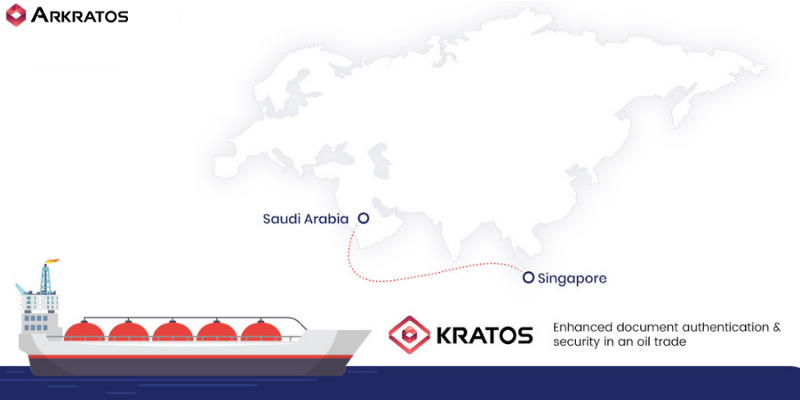How KRATOS enhances document authentication and security with Linxens’ dLoc® technology
Manual documentation is one of the major challenges of the commodities trading industry. The industry’s excessive dependence of paper documentation leads to the inevitable consequences such as the following:
- Payment delay due to contractual ambiguities
Contractual ambiguities necessitate discretionary by banks. Banks can refuse payment even for trivial discrepancies based on strict compliance standards. Letter of Credit (LC) independence principal can lead to payment denial to seller despite fulfilment of the sales contract.
- Payment delays from contract Errors
Contact errors such as data mismatch in document, semantic and syntactic error etc. can hold up payment to the exporter. Moreover, the need for waiver or acceptance from buyer or resubmission of documents often results in delayed payments.
According to International Chamber of Commerce (ICC), 70% of documents presented for LC evaluation are rejected on first presentation. Hence, the time-consuming and error prone manual documentation process affects the overall transaction of the commodity business.
The only solution is to remove dependency on papers and digitize the trade process. KRTAOS has tried to solve this problem by not only digitizing the paper contracts but also by transforming them into smart contracts. However, the problem still remains as many people are still not accustomed to the blockchain technology. Hence, they cannot remove their dependence on paper documentation completely, leaving a scope for documentation fraud.
To solve this problem, KRATOS has partnered with Linxens for their dLoc® technology. Combining the security of blockchain and the convenience of Near Field Communication (NFC), it allows any document to be stored, shared and verified in real-time using an NFC-enabled mobile device. The dLoc® Tag featuring a seal containing a memory chip that attaches to the document and stores all the relevant data in encrypted format. Reading the data off the chip and verifying the integrity and authenticity of the document through a robust blockchain application can be carried out quickly and easily using tools that are widely available today, e.g. smartphones.
In order to understand this technology, let us take the following example of cross border trade of a barrel of oil between Saudi Arabia and Singapore. While the loader 1 is being loaded from the post of Saudi Arabia, it accesses the dLoc® Tag and updates it to inform that it has been accepted and transferred to the ship. If the original content is numbered version-1, the contents of the updated tag are assigned a new number (version-2).
Once the ship is offloaded and the tag is received at the post of entry, loader 2 scans the dLoc® Tag and records the receipt of the oil asset. When the contents or the tag are updated, a newer number is assigned — (version 3).
The device of loader 2 is connected to the internet and submits the updated tag to the dLoc® blockchain. The dLoc® Service creates a new block containing the tag’s contents based on Version 3 of the asset document.
Now two different document versions are saved onto the dLoc® seal’s blockchain: version 1 showing that the tag was assigned to the barrel of oil and version 3 showing the receipt of the same asset at destination port.
When the device of loader1 is connected to the internet and submits the document data contained on the version 2, the dLoc® Service adds a new block to the seal’s chain.
Now, there are three document versions (in this order): Version 1 (tag assigned to asset), Version 3 (asset accepted at the destination port), and Version 2 (asset loaded onto the container ship).
The block order doesn’t reflect the actual order of events; however, the chain still contains the entire history of the asset. The version numbers help to determine the sequence of events.
This not only eliminates the double spend problem at the tag level, but also allows for online/offline capabilities without any concern for data store request order.
This entire process ensures a more secure document authentication system and a tightened security. For more information or to request for a demo please write to us at hello@arkratos.com or visit https://kratospct.io/.
Telegram: https://t.me/arkratos_group
( )
)